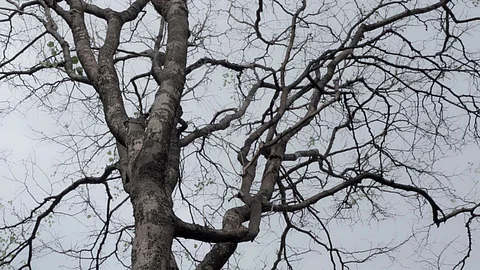
- HOMEGROWN WORLD
- #HGCREATORS
- #HGEXPLORE
- #HGVOICES
- #HGSHOP
- CAREERS
- ABOUT US
- CONTACT US

In 2024, Earth's average temperature climbed to more than 1.5°C above pre-industrial levels for the first time in recorded history — breaching a threshold many thought was a 'safe zone' as climate change worsens and the adverse effects of global warming become more palpable. It was a stark reminder that the world is precariously moving into dangerous territory, perhaps more quickly than previously thought. According to a predictive study published in Environmental Research Letters, many regions of the world will cross 3°C above pre-industrial levels for the first time as early as the late 2030s, with the rest of the world following in the 2040s.
This affects all of us, all living beings on Earth, humans and non-humans alike, and yet contemporary climate discourse remains largely anthropocentric. 'Witnessing the Anthropocene: A Curated Film Package', presented by Shared Ecologies, New Delhi, disrupts this human-centric narrative of climate change through Jayasri Sridhar's Maraluva Daari (Path of Return, 2024) and Anoushka Kurien's Notebooks from Alaiyathi (2022-2024) — two films that centre the non-human elements that shape our climate and environment. Anchored in storytelling, ecology, and a deep attentiveness to landscape, both films offer poetic, non-linear modes of inquiry into our entangled existence with non-human life. They reject the illusion of human dominance over nature and highlight the subtle, ongoing dialogues between earth, water, flora, and myth.
Jayasri Sridhar’s 'Maraluva Daari' — a 24-minute narrative documentary in Kannada set against the backdrop of the urban Anthropocene — unfolds as a mythic-ecological meditation. Drawing on vernacular storytelling, field research, design, language, and filmmaking, the film reimagines the story of Ahalya from the Indian epic Ramayana — the woman turned to stone — and asks: what if she chose not to return to her human form?
In Ahalya’s quiet refusal lies a radical subversion of human-centric ideals. No longer a symbol of punishment, the rock becomes a witness — to history, to violence, to the spread of concrete, and to the persistence of life beyond human design. Sridhar interlaces ancient mythology with the contemporary ecological crisis, crafting a cinematic space where urban wilderness, feral landscapes, and transformed female figures from the Ramayana converge. The film is both a visual meditation and a political gesture — one that deconstructs human superiority and invites viewers to rethink transformation, agency, and ecological coexistence. By centering non-human characters and rejecting anthropocentric narratives, it offers a decolonized, place-based perspective that foregrounds local ecologies while opening up a broader, more inclusive environmental conversation.
Anoushka Kurien's 'Notebooks from Alaiyathi' (2022–2024) continues this thread of decentering humans. The film moves between notation and poetic reverie, documenting mangrove restoration work in the Ennore-Pulicat region. It is not a conventional documentary, but a field notebook made from moving images — part observational record, part artistic inquiry. Kurien's film speaks to the mangroves themselves: their rhythms, their resilience, their ability to heal. Born from Project Alaiyathi, a community-based effort, the film is deeply embedded in its site and subject. It offers viewers a sensorial experience of restoration, memory, and the layered textures of coastal life. The film recasts mangroves as the protagonists — agents of transformation in a world that often forgets them.
Together, the two films offer a profound shift in perspective. They ask us to listen to stone, to trace the gestures of water, and to reconsider the stories we tell about progress, nature, and the human self.
